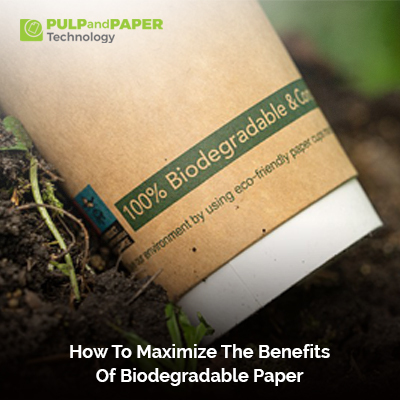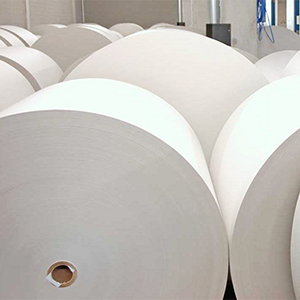How to Maximize the Benefits of Biodegradable Paper?

In our quest for sustainable living, one significant stride has been the emergence of biodegradable paper as a viable alternative to traditional paper products. As concerns over environmental degradation and waste management intensify, the demand for eco-friendly alternatives has grown exponentially. Biodegradable paper, crafted from materials that break down naturally over time, offers a promising solution to the environmental challenges posed by conventional paper production and disposal.
This article aims to delve into the various aspects of maximizing the benefits of biodegradable paper, exploring the importance of responsible consumption, proper disposal methods, and the role of individuals and communities in fostering a sustainable approach.
The Rise of Biodegradable Paper:
Biodegradable paper is manufactured using materials that decompose naturally, leaving behind minimal environmental impact. Often derived from renewable resources such as plant fibers, these papers break down into harmless substances, avoiding the persistent environmental issues associated with non-biodegradable counterparts.
The increased awareness of the ecological consequences of traditional paper production, which involves cutting down vast numbers of trees, has led to a surge in the adoption of biodegradable alternatives. Consumers, governments, and businesses alike are recognizing the urgent need to shift towards sustainable practices to safeguard our planet's delicate ecosystems.
Reducing Consumption and Embracing Digital Alternatives:
One of the primary ways to maximize the benefits of biodegradable paper is to reduce overall paper consumption. While biodegradable paper is a step in the right direction, minimizing our reliance on paper products altogether is equally crucial. Embracing digital alternatives for communication, documentation, and information dissemination significantly reduces the demand for physical paper.
By utilizing electronic platforms, emails, and online documents, individuals and organizations can make a substantial impact on reducing their carbon footprint. This shift not only conserves valuable natural resources but also contributes to the preservation of forests, which play a vital role in maintaining biodiversity and regulating the climate.
Proper Recycling Practices:
For the biodegradable paper that is used, it's essential to adhere to proper recycling practices. In many regions, biodegradable paper can be recycled alongside traditional paper products. Understanding local recycling guidelines and ensuring that biodegradable paper is sorted and disposed of correctly enhances its positive environmental impact.
Recycling facilities play a crucial role in transforming used paper into new products, reducing the need for virgin materials. By supporting and participating in recycling initiatives, individuals can actively contribute to a circular economy, where resources are reused, reducing the strain on the environment.
Home Composting for Biodegradable Paper:
Biodegradable paper, especially items like food containers, plates, and napkins, can find a second life through home composting. Composting is a natural process that turns organic waste into a nutrient-rich soil conditioner. When biodegradable paper is added to a composting system, it decomposes along with other organic materials, creating valuable compost for gardens and plants.
To maximize the benefits of home composting, it's essential to shred or tear biodegradable paper into smaller pieces. This accelerates the decomposition process, allowing the paper to integrate seamlessly into the compost. Home composting not only reduces the burden on landfills but also contributes to the creation of nutrient-rich soil, promoting sustainable gardening practices.
Avoiding Contamination for Effective Biodegradation:
Contamination poses a significant challenge to the effective biodegradation of paper products. Non-biodegradable materials mixed with biodegradable paper can hinder the decomposition process and lead to environmental pollution. To address this issue, individuals must ensure that biodegradable paper is kept clean and free from contaminants before disposal.
Educating Others and Building Awareness:
Maximizing the benefits of biodegradable paper requires a collective effort. Individuals can play a crucial role in spreading awareness about the importance of sustainable practices. By educating friends, family, and colleagues about the advantages of biodegradable paper and responsible consumption, a ripple effect can be created, leading to a broader adoption of eco-friendly alternatives.
Supporting Responsible Brands and Businesses:
Consumers have the power to influence change through their purchasing decisions. Choosing products from companies that prioritize sustainability and use responsibly sourced materials sends a clear message to the market. By supporting environmentally conscious businesses, individuals contribute to the growing demand for eco-friendly alternatives, encouraging more companies to adopt sustainable practices.
Utilizing Biodegradable Paper in Gardening and Landscaping:
Certain types of biodegradable paper, such as mulch and seed paper, can be utilized in gardening and landscaping. Mulch made from biodegradable materials helps retain soil moisture, suppress weeds, and regulate temperature. Seed paper, embedded with seeds, can be planted directly into the soil, resulting in both the paper and seeds breaking down and fostering plant growth.
Advocating for Infrastructure Improvement:
The effectiveness of biodegradable paper relies on a well-established waste management infrastructure. Individuals can advocate for improved systems that support the proper disposal and processing of biodegradable materials. Engaging with local authorities, participating in community discussions, and supporting initiatives that promote sustainable waste management contribute to building a more resilient and eco-friendly infrastructure.
Participating in Community Initiatives:
Actively participating in community initiatives focused on environmental conservation and waste reduction is another impactful way to maximize the benefits of biodegradable paper. Joining local clean-up events, collaborating with environmental organizations, and supporting initiatives that promote sustainable practices create a sense of shared responsibility and contribute to a more environmentally conscious community.
Conclusion:
In conclusion, the widespread adoption of biodegradable paper represents a positive step towards a more sustainable and eco-friendly future. Maximizing its benefits requires a multifaceted approach that includes responsible consumption, proper disposal, education, and community engagement. By incorporating these practices into our daily lives, we can collectively contribute to the preservation of our planet and create a more sustainable legacy for future generations. As individuals and communities embrace these principles, the impact of biodegradable paper on the environment will continue to grow, fostering a more harmonious relationship between human activities and the natural world.









